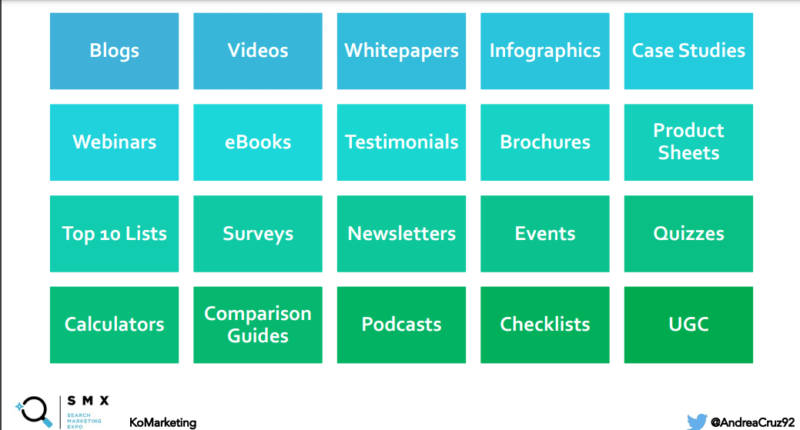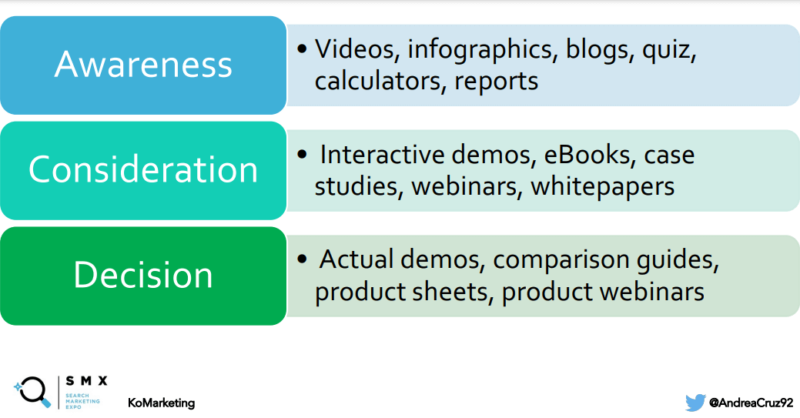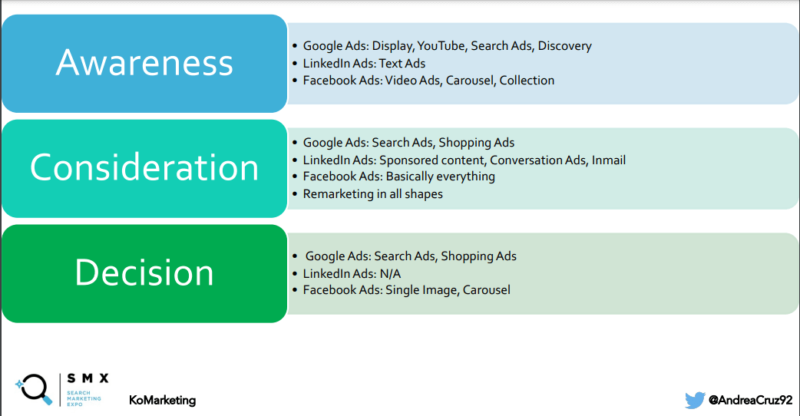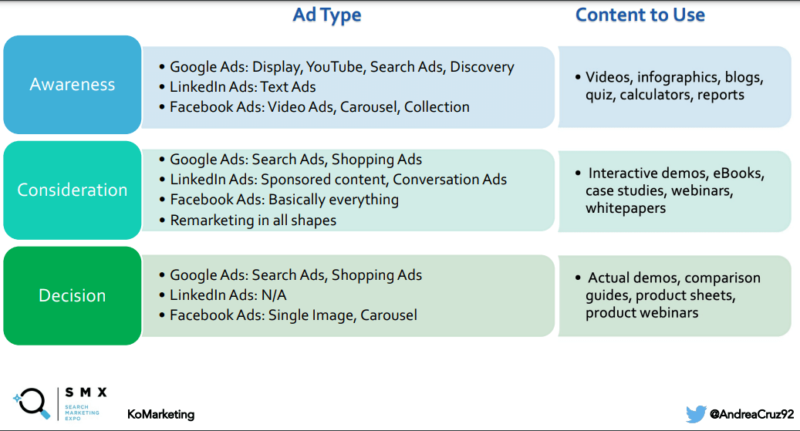Many brands struggle to understand the ins and outs of their content marketing funnels. They often find it difficult to know what people are looking for and which pieces of content address their needs.
“When people enter your funnel, you have no idea where they came from or where they’re going,” said Andrea Cruz, associate director of digital marketing at KoMarketing, in her presentation at SMX Next.

Brands producing many different types of B2B content are often shocked that they’re not driving more consumers into their marketing funnels, especially when data shows that 70% of professionals view at least three pieces of content before making purchases.
According to Cruz, this discrepancy often stems from a lack of knowledge of the customer and their needs: “We don’t know where they are in the funnel. We don’t know what their pain points are. We don’t know where they consumed our content.”
There are on average five or more people involved in any given B2B purchase, so marketers need to scale their content funnel efforts to address each decision-maker’s needs.
Take actionable steps to transform your marketing funnel content
Cruz says most marketers do nothing to optimize their content funnels, which is why so many campaigns fail. She recommends brands map out the types of content they own and match them to each stage of the marketing funnel: awareness, consideration and decision.

“Great marketers map their content,” she said. “B2B marketers are using advertising as a way to leverage and to pass along that information. So, we may be creating these huge amounts of content and then not mapping anyone.”
Marketers will find that mapping out content types to these stages will make it easier to generate relevant resources and funnel customers to those areas.
Awareness. “When we think about awareness, we’re thinking about videos, infographics, blogs, quizzes, calculators, reports, things that tell customers about their problem,” said Cruz. “That’s the type of content we want to give people at this stage. We don’t want to give people a video of a product — they don’t even know they have a problem, so why are you telling me that I need an invoice management software?”
Using “symptom” keywords that point to the problem customers are experiencing can make content in this stage more relevant. For example, if you’ve identified that readers are looking for website speed solutions, you might want to include keyword phrases like, “How do I improve site speed?” within this content.
Consideration. The solutions your content offers in the awareness stage aren’t for everyone, which is why marketers should use the consideration stage to clarify your offering’s purpose. This content shouldn’t press customers to buy.
“It’s not about a sales discussion at this stage,” Cruz said. “You can even use this stage to disqualify people from your funnel.”
“So, interactive demos and trials are things to help them understand if your solution will be best,” she added.
Decision. Once customers reach the decision stage, marketers need to provide content that addresses their most important concerns, taking into account the type of individuals involved.
Cruz provided some helpful examples of the different types of content marketers can provide based on the customer in question:
- Product-specific sheets for technical-minded customers.
- Product webinars for visually-inclined consumers.
- Product comparison guides for top-level decision-makers.
Apply new messaging formats to ad platforms
Funnel-worthy content doesn’t just have to sit on your website; it can be deployed across ad platforms. This content will need to be adapted to fit within each channel, but marketers can use the marketing funnel stages as a guide throughout the process.
“If we take a step back and go back to that basic funnel — awareness, consideration, and decision — you can do the exact same thing with ad formats and platforms,” Cruz said.

Marketers can use the content funnel framework in ad messaging in Google Ads, LinkedIn Ads, Facebook Ads and across many other platforms. The key is to adapt the content formats that are both optimized for the medium in question and match the relevant funnel stage.

Not every marketer’s content funnel will look the same, but Cruz believes this framework is the best way to meet customers where they are and drive more revenue: “This might change as you start testing, but having everything written down helps us understand where we are, where our goals are and what we need to get to the next level.”
Watch the full SMX Next presentation here (free registration required).
The post How to produce actionable content throughout the marketing funnel appeared first on Search Engine Land.
No comments:
Post a Comment